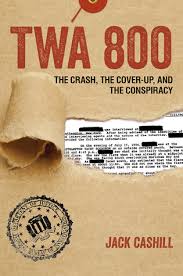Media Rush to Judgment on 3 Fake "Hate Crimes"
![]()

Order Jack Cashill's latest book, TWA 800: The Crash, the Cover-Up, and the Conspiracy
![]()

About Silenced: Flight 800
and the Subversion
of Justice (DVD) -
-Buy the Silenced DVD-
![]()
© Jack Cashill
November 8, 2017 - WND.com
On three separate occasions in greater Kansas City, in just the month of October, the media raced to see who could scream “hate” quickest and loudest.
On three separate occasions in greater Kansas City, in just the month of October, these same media quietly walked back their bone-chilling stories of hate.
One would have hoped they would have learned after the first time, surely after the second, but the media refuse to learn. They have too much political equity invested in accusing red state America of thought crimes.
Two of the incidents took place on the Kansas State campus in Manhattan, Kansas. On each occasion, K-State President Richard Myers, retired head of the Joint Chiefs of Staff, rushed out stern memos castigating the K-State community for some new outrage.
On October 6, a Jewish Sukkah, a temporary hut constructed for use during the week-long Jewish festival of Sukkot, was found wrapped around a car of grad student Glen Buickerood. It just so happens that Buickerood works on “diversity initiatives.”
In response to the incident, the university staged a Sukkot Solidarity Dinner preceded by a march across campus. Buickerood took the opportunity to do some heavy duty virtue signaling. Said he piously, “And I say to those who targeted me, and wrapped the Sukkah around my car, I forgive you.”
Myers took the job at K-State just a year ago. He seems to have inherited a communications team well steeped in the progressive patois spoken by university administrators from coast to coast.
“There is no place in our community for hateful, criminal reactions to religious expression,” said the statement issued by Myers. “Many who live or work on our campuses, particularly those of the Jewish community, are experiencing significant pain and fear as a result of this act.”
Instead of academic boilerplate, Myers would have served the university much better by saying, “Police are investigating the destruction of the Sukkah, and we will keep you posted on their progress.”
As it happens, a storm swept through Manhattan the night the Sukkah was disassembled and wrapped around the fellow’s car. Within days, K-State police burst Buickrood’s virtue bubble when they announced that “severe weather was the cause of the damage.”
One would hope that Myers had learned something from his rush to judgment. He did not. On Halloween, Dauntarius Williams, 21, found racist slogans painted on his car near the K-State campus, and he went public with his outrage.
The media love stories about African Americans victimized by hate crimes and rushed the story into the headlines. Even in the initial stories it was clear that Williams had been caught in any number of lies, but the media covered those with various caveats and clarifications.
“Those who wish us harm should not be allowed to create a culture of fear and divisiveness,” said Myers, quickly getting acclimated to campus PC chaos. Even the New York Times saw fit to cover this transparently bogus story as if it were real, misspelling Myers’s name in the process.
To no one’s great surprise beyond the campus, Williams soon admitted to the K-State police that he did the sloganeering as a Halloween prank. There was no punishment for Williams despite the hundreds of hours of police work spent on his behalf and the gallons of tears shed.
The two Kansas events bracketed an October 29 incident in Kansas City in which racist slogans were found painted on a predominantly black church.
This story was as shaky as William’s from the get-go. If the media failed to see through it, the people in the comment section did. A few pointed out that “white nationalists” typically know how to draw swastikas. This guy did not.
After a few days of noisy breast beating by the media and the progressive elite, the police arrested a disgruntled black employee of the church.
The logic behind extra punishment for hate crimes is that the “hate” causes what the good general calls “significant pain and fear.”
The fake hate crime, however, does triple duty. It terrorizes one community, stigmatizes another, and embarrasses the breast beaters, professional and amateur alike.
Unfortunately, however, it does not seem to embarrass them enough.

